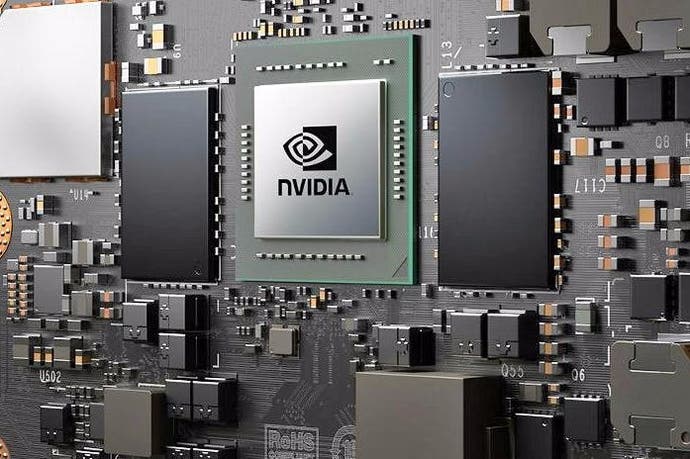In Theory: Where next for the Nintendo/Nvidia partnership?
A more powerful second-gen Switch? A replacement dock with extra graphics power?
It's been a long time coming. Nintendo originally collaborated with semi-conductor giant Nvidia for a follow-up to the DS that never made it to production - though prototype devkits based on early Tegra processors were produced - but only now with Switch do we see just how potent that partnership can be. Nintendo's hybrid game console idea paired with Nvidia's class-leading performance and efficiency have combined to create the platform holder's most successful console launch of all-time. The question is, what's the next step in this partnership?
First, let's make something clear - the collaboration between the two firms isn't a one-time deal, according to Nvidia at least. In a conference call with investors last year, CEO Jen-Hsun Huang said that the partnership "will likely last two decades" and this is not surprising bearing in mind that the set-up is so beneficial for both companies.
Nintendo needs access to class-leading gaming technology with a particular emphasis on power efficiency for its mobile products. For its part, the Tegra side of Nvidia's business has hardly been a roaring success, and a mass volume deal for what is effectively off-the-shelf silicon is great for the bottom line, and is effectively money for old rope now we know that Switch's custom Tegra processor is architecturally identical to its existing X1.
But looking forward, what further gaming hardware can we expect Nintendo to deliver based on its seemingly exclusive access to Nvidia's parts library? Remarkably, the technology is already available for Nintendo to roll out a more refined, second generation Switch, along the lines of the mid-generation refreshes the firm released for both DS and 3DS. More performance and longer battery life have characterised both DSi and the New 3DS, and that's exactly what Nintendo can deliver by shifting to Nvidia's Tegra X2.
It's the processor we hoped would form the technological basis of the Switch, based on a more power-efficient fabrication technology (16nm FinFET vs X1's 20nm planar) and sees a shift to Nvidia's Pascal GPU architecture (which, in fairness, is mostly identical to Switch's existing cores) along with double the memory bandwidth. The four ARM Cortex A57 processor cores are retained, along with Nvidia's own Denver 64-bit CPU architecture. It's a fascinating refresh of X1, though not a generational leap - and we can get some idea of its hardware make-up by looking at the one shipping product it is available in, the Jetson TX2 embedded system kit.
It's a PCB solution designed for developers looking to create their own Tegra-powered devices, and it comes with two performance modes. Pushed to the max, GPU clocks hit 1300MHz while the CPU cluster runs at 2GHz or higher. Meanwhile, in efficiency mode, the A57s hit 1.2GHz while the GPU settles at 854MHz. In this configuration, Nvidia says that Tegra X2 is twice as power-efficient as X1. And crucially, its max efficiency mode also disables the Denver CPU cores, leaving just the Cortex A57s active - and that's all Nintendo needs for complete compatibility with the existing Switch library of games.

Tegra X2 ticks all the boxes for Nintendo's needs for a prospective second-gen Switch - even assuming further downclocks, it should still usefully outperform the existing hardware, increased battery life is a given, plus there's a ton of overhead for significant improvement when the system is docked. It's hard to believe that the Denver cores will find much use (and the fact that they are disabled in efficiency mode is telling) and the sheer fact that a new processor like Tegra X2 uses the A57s at all would seem to suggest that the processor was built with X1 compatibility in mind. Put simply, with a clean-page approach to designing an X1 successor, later improved ARM CPU cores would have been available and some might say that retaining the A57s in the X2's design benefits Nintendo more than Nvidia.
Beyond Tegra X2, Nvidia has already announced its latest, cutting-edge Tegra processor - codenamed Xavier. It's still built on 16nm FinFET technology, but GPU core count is doubled and there's an octo-core custom 64-bit CPU cluster. Quite how this would map to a Nintendo console isn't so apparent - conceivably we'd be looking at PS4 levels of performance, or something in that ballpark. The size of the chip would make it more difficult to integrate into a Switch-type hybrid design and the processor would obviously be a lot more expensive too. Power consumption in a GPU twice the size of the current Switch's would also be problematic - except for one thing: Nvidia has already confirmed that the new Volta GPU architecture used in Xavier is 50 per cent more power efficient than Pascal. A few years down the line, when chip manufacturing costs have come down, perhaps Xavier could work within a tablet-style device?
Other options are available of course, and anything could happen in this prospective two-decade window of collaboration between Nintendo and Nvidia. Given a sufficiently exciting, innovative concept, there's nothing to stop the platform holder returning to the dedicated home console arena. Strapping its next-gen 64-bit CPU cluster to a GTX 1060-class GPU could produce a console that could adequately power a 4K screen, based on the recent tests we carried out where we deployed PS4 Pro rendering techniques onto mainstream PC gaming hardware. On top of the impressive results seen there, let's remember just how good Nvidia's dedicated console graphics API - NVN - has proven to be. Tegra X1 is vintage 2015 technology and it's handing in exceptional results from its 256 CUDA cores. GTX 1060 has 1280 of them running at around 2.3x clocks, paired with much faster memory. To put it plainly - Nintendo hasn't historically pushed cutting-edge tech, but now it has the means to do so should it so wish.

But maybe there'll be a different approach. Last year, there was much discussion of Nintendo's patent for a supplemental computing device - or SCD - that essentially adds additional processing resources to the Switch, with the bulk of the patent discussing distributed computing via the cloud. But the patent also opens the door to a more powerful piece of hardware that could supplement the existing processor. It could take the form of a larger replacement dock, hooking up to the Switch via USB-C, the interface repurposed to act as a high bandwidth connection between handheld and dock. But what about the hardware inside it?
Well, back in the day, a leak emerged from the Foxconn factory where the Switch was being manufactured. In some respects, the information provided was inaccurate - it put forward the idea of a much more powerful processor - but elsewhere, specifically in terms of the physical description of the machine and its innards, it proved 100 per cent accurate. And there is discussion in that leak of an 'advanced dev kit', which appears to feature 8GB of RAM, and a processor that's about the same size as the GP106 Nvidia chip found inside the GeForce GTX 1060. And on top of that, another processor - about the same size as the Switch's Tegra - is also described.
Assuming this isn't fantasy, this dev kit sounds rather like a completely integrated version of the existing Switch and a potential supplemental computing device - all in one developer-friendly device. The retail version would simply be a replacement dock for your Switch. To keep things simple, the Switch's GPU could be powered down completely, allowing for higher CPU performance in order to drive richer visuals, backed by additional cloud resources.

It's a fascinating notion and a potential route forward, and would indeed stand a good chance of trading blows with PlayStation 4 Pro and Project Scorpio - in terms of raw graphics power, at least. However, the challenge facing developers would then be twofold: firstly, titles would need to support three Switch configurations - handheld, docked and SCD-enabled. Secondly, even with ramped up CPU clocks, we'd still be looking at an under-powered processor set-up when compared to a prospective SCD's graphics unit. Multi-platform ports would, in some respects, still be out of reach.
Ultimately though, the main point of contention is this - the device described by the Foxconn leaker is a graphics power play, pure and simple. Historically, Nintendo doesn't launch major new hardware upgrades for the sake of improved visuals alone - there'd need to be a compelling, innovative concept behind it and if this project ever does become reality, we can't wait to see what that actually is.
But in conclusion, even if Tegra X2, Xavier and SCD speculation ends up being just that, the point is that by hooking up with Nvidia for a long term partnership, Nintendo has access to some of the most refined, powerful and efficient hardware on the market, with development tools and APIs put together by some of the smartest brains in that field. For a company that previously held on doggedly to ancient architectures backed by extremely poor development environments, working with Nvidia as a technology partner really is a game-changer.


